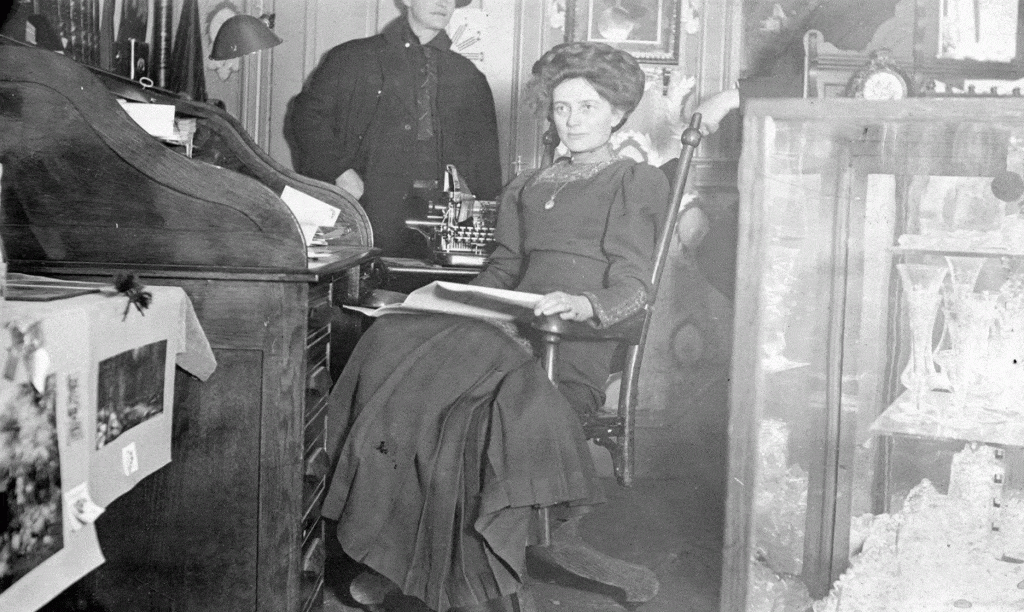In the pre-dawn hours of April 18, 1906, San Francisco was jolted awake by a violent earthquake. Though the quake preceded the Richter scale by decades, scientists have estimated the magnitude at 7.9 based on eyewitness accounts and geological studies. At the time, San Francisco was the largest city on the West Coast and one of the most important financial and cultural centers in the country. The quake leveled eighty percent of the city and left hundreds dead. In the subsequent days, over thirty fires caused more death and destruction and the city was left reeling.
Parkite Carrie Vivian Hodgson had been visiting friends when the quake struck. She returned to Park City nine days later and related the “terrible, almost inconceivable, nerve-wracking experiences” she went through to the Park Record.

Credit: Park City Historical Society and Museum, Thomas F. Hansen Collection
Though immediately awakened, Hodgson was trapped in her room until the shaking stopped. When she made it to the street, she encountered “frantic men, women, and children in their night-clothes.”
Fire broke out almost immediately and the neighborhood was evacuated. The quake had “frightened the fire department horses, causing them to break away,” Hodgson reported, which delayed the firemen’s response to alarms. Furthermore, water mains had broken, cutting off the water supply and leaving firemen “powerless.”
Aftershocks plagued the city for days, with a particularly strong one occurring on April 19. Hodgson, standing in the street at the time, witnessed a gas main explosion that threw debris high in the air and scorched her hands and face.
Other Parkites or former Parkites directly or indirectly affected by the quake included: Dr. Ward, whose family lived in Berkeley, CA; Will Scranton, whose parents lived in the San Francisco; Robert Westwick, a student at Stanford; H.W. Thomas, who survived but lost his business and home; Jack Middour, who lived in Santa Cruz; Mrs. S.W. Platt, whose son lived in San Jose; Mrs. E.P LeCompte, whose sister lost the several homes she owned on Nob Hill; Clarence Horsford and his brothers Myron and Star, who lost their homes and business; and Thomas Hickey, who had moved with his family but returned to Park City after the quake. There were likely others who went unreported.
Though some developers in San Francisco tried to use the quake as an opportunity to push out the city’s Chinatown, the Chinese community rallied and rebuilt where they’d been. The Park Record noted that Park City’s Chinese residents made a special donation to San Francisco’s Chinese residents. The local community also “answered many personal calls for help.” It’s likely that many local Chinese residents had friends and family in San Francisco at the time, though the paper did not report their names.
The quake’s impact was felt for decades. Several insurance companies went bankrupt after issuing payouts and financial repercussions of the quake contributed to the economic Panic of 1907. Additionally, trade and commerce diverted to Los Angeles, which quickly overtook San Francisco to become the largest and most important city in the West.